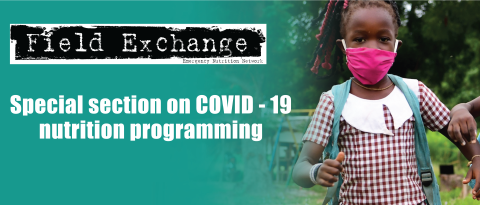UNICEF Nutrition Strategy 2020-2030
Report Summary1
In December 2020, UNICEF published its new Nutrition Strategy, to guide the next ten years of its nutrition related activities. The strategy outlines UNICEF’s vision of ‘a world where all children, adolescents and women realize their right to nutrition’ and highlights strategic objectives to support governments and partners in ending child malnutrition in all its forms. Centered around six results areas, the strategy emphasises a universal premise, that prevention comes first, in all contexts, and if prevention fails, treatment is a necessity. The result areas are:
- Early childhood nutrition: focuses on programming to prevent of all forms of malnutrition in the first five years of life.
- Nutrition in middle childhood and adolescence: encompasses programming to prevent of malnutrition in middle childhood (5-9 years of age) and adolescence (10-19 years of age).
- Maternal nutrition: concentrates on prevention of malnutrition programming in women during pregnancy and breastfeeding as well as the prevention of low birthweight in newborns.
- Nutrition and care for children with wasting: encompasses programming for the early detection and treatment of children with wasting through facility- and community-based approaches, in all contexts.
- Maternal and child nutrition in humanitarian action: which includes UNICEF’s nutrition programming in emergencies, guided by UNICEF’s Core Commitments for Children in Humanitarian Action and its commitments as Cluster Lead Agency for Nutrition.
- Partnerships and governance for nutrition: which includes programming to strengthen the enabling environment for nutrition through improved partnerships, data, knowledge, advocacy and financing.
Programme priorities are outlined for each result area. Furthermore, the Strategy recognizes that in order to improve nutrition outcomes, a systems approach is needed and there is a central role to be played by five systems: food social protection, education, water & sanitation and health to deliver diets, services and practices to support adequate nutrition. Priorities for each system are outlined.
The Strategy reflects a number of strategic shifts from previous strategies. Firstly, there is a focus on all forms of malnutrition, including overweight and obesity and a focus on bringing together the prevention of both forms of undernutrition (stunting and wasting). The UNICEF Conceptual Framework has also been adapted to reflect the broader malnutrition focus. Secondly, while maternal and child nutrition in the first 1,000 days of life remains core to UNICEF programming, a broader focus on nutrition in middle childhood and adolescence is taken to break the intergenerational cycle of malnutrition. There is also a deliberate emphasis on the centrality of nutritious, safe, affordable and sustainable diets and the importance of the food system. More broadly, the strategy focusses on a multisectoral approach to nutrition improvements as well as a greater focus on the role of the private sector to advocate for optimal nutrition practices. Critically, while the strategy has a universal vision and agenda, it calls for approaches to be contextualized- the strategy stresses that UNICEF country programmes are not expected to implement all components but develop context-specific programmes, informed by analysis of the unique determinants, drivers, potential impact pathways and available resources in each context.


